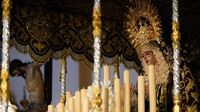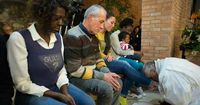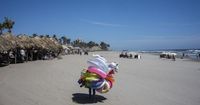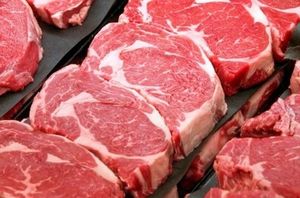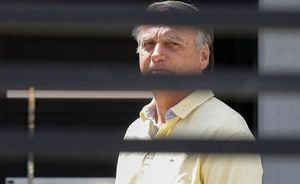As Semana Santa (Holy Week) unfolds, the observance of Jueves Santo (Holy Thursday) on April 17, 2025, leads directly into Viernes Santo (Good Friday) on April 18, 2025. These days are significant in the Christian calendar, particularly for Catholics, as they commemorate pivotal events in the life of Jesus Christ. While many Mexicans enjoy a vacation during this time, not everyone has the days off, raising questions about work and pay during this religious observance.
Jueves Santo marks the beginning of the Triduo Pascual (Paschal Triduum), which includes Good Friday and culminates in Easter Sunday. This day is observed with great reverence, as it celebrates the institution of the Eucharist during the Última Cena (Last Supper). During this momentous occasion, Jesus famously instructed his disciples, "Hagan esto en conmemoración mía" ("Do this in remembrance of me"), highlighting the significance of communion in Christian faith.
On this day, the Catholic Church conducts the Misa Crismal (Chrism Mass), where holy oils are blessed, marking a renewal of the priests' promises made at their ordination. However, the day is also overshadowed by the remembrance of Jesus’ impending sacrifice, as it leads into the somber reflections of Good Friday.
According to the Evangelical accounts, the Passion begins with Jesus' condemnation by Pontius Pilate after he declared himself 'King of the Jews.' Following this, he was stripped, beaten, and forced to carry his cross to Mount Golgotha (Calvary), where he was crucified alongside two thieves. This event is commemorated through the Vía Crucis (Way of the Cross), where Christians reflect on the 14 stages of Jesus' suffering, from his condemnation to his burial.
On Viernes Santo, the focus shifts entirely to the crucifixion of Jesus, a day steeped in penance and somber reflection. The liturgical color for this day is red, symbolizing the blood of Christ. Unlike other days, the Eucharist is not celebrated on Good Friday; instead, the Liturgia de la Pasión del Señor (Liturgy of the Passion of the Lord) takes place in the afternoon, coinciding with the hour of Jesus’ death on the cross.
In Mexico, both Jueves Santo and Viernes Santo are recognized as holidays according to the SEP (Secretaría de Educación Pública) school calendar. However, they are not considered official days of rest under the Ley Federal del Trabajo (Federal Labor Law). This means that while many people may have the days off from school, those working in various sectors—such as restaurants, entertainment venues, and retail—will still be required to work.
According to the law, these days are not mandatory holidays, which has led to confusion about compensation for those who do work. If an employee works on Jueves Santo or Viernes Santo, they will not receive double or triple pay, as these days do not qualify for holiday pay under the current labor regulations. However, if someone works on Domingo de Pascua (Easter Sunday), they may be eligible for a 25% premium on their daily salary, depending on their usual work schedule.
The cultural significance of Semana Santa extends beyond work and pay; it is a time for deep spiritual reflection and community observance. In many cities, processions and reenactments of the Passion of Christ take place, drawing both locals and tourists alike. These events serve to strengthen community bonds and reinforce religious faith.
This year, Pope Francis, who has a tradition of commemorating Jueves Santo with visits to prisons, continued this practice despite recently recovering from a serious respiratory illness. On April 17, he visited the 'Regina Coeli' prison in Rome instead of participating in the traditional mass at the Basilica of Saint Peter. This visit, lasting about 20 minutes, was significant not only for the prisoners but also symbolized the Pope's commitment to the marginalized.
Throughout his papacy, Francis has made it a point to engage with vulnerable populations, dedicating his Holy Thursday afternoons to visiting penitentiaries or centers for refugees. This year, however, he did not perform the washing of feet ritual, a customary act that mirrors Jesus' humility during the Last Supper. Instead, he focused on meeting with about 70 inmates, marking his first large audience since leaving the hospital after a lengthy recovery from pneumonia.
The Pope's absence from the mass at the Basilica highlights the challenges he faces in participating fully in the Holy Week rituals. Delegating responsibilities to various cardinals, he ensured that the traditional Vía Crucis on Good Friday will be led by Cardinal Baldassare Reina, the vicar for the diocese of Rome.
As the faithful prepare for the culmination of Semana Santa with Pascua de Resurrección (Resurrection Sunday) on April 20, the observances of Jueves Santo and Viernes Santo remind Christians of the profound sacrifices and teachings of Jesus. These days, while also intertwined with cultural practices and labor laws, serve as a moment of unity, reflection, and hope for many around the world.
In sum, Semana Santa is not just a religious observance but a significant cultural event that impacts the lives of many, blending faith, tradition, and community together in a time of reflection and renewal.
